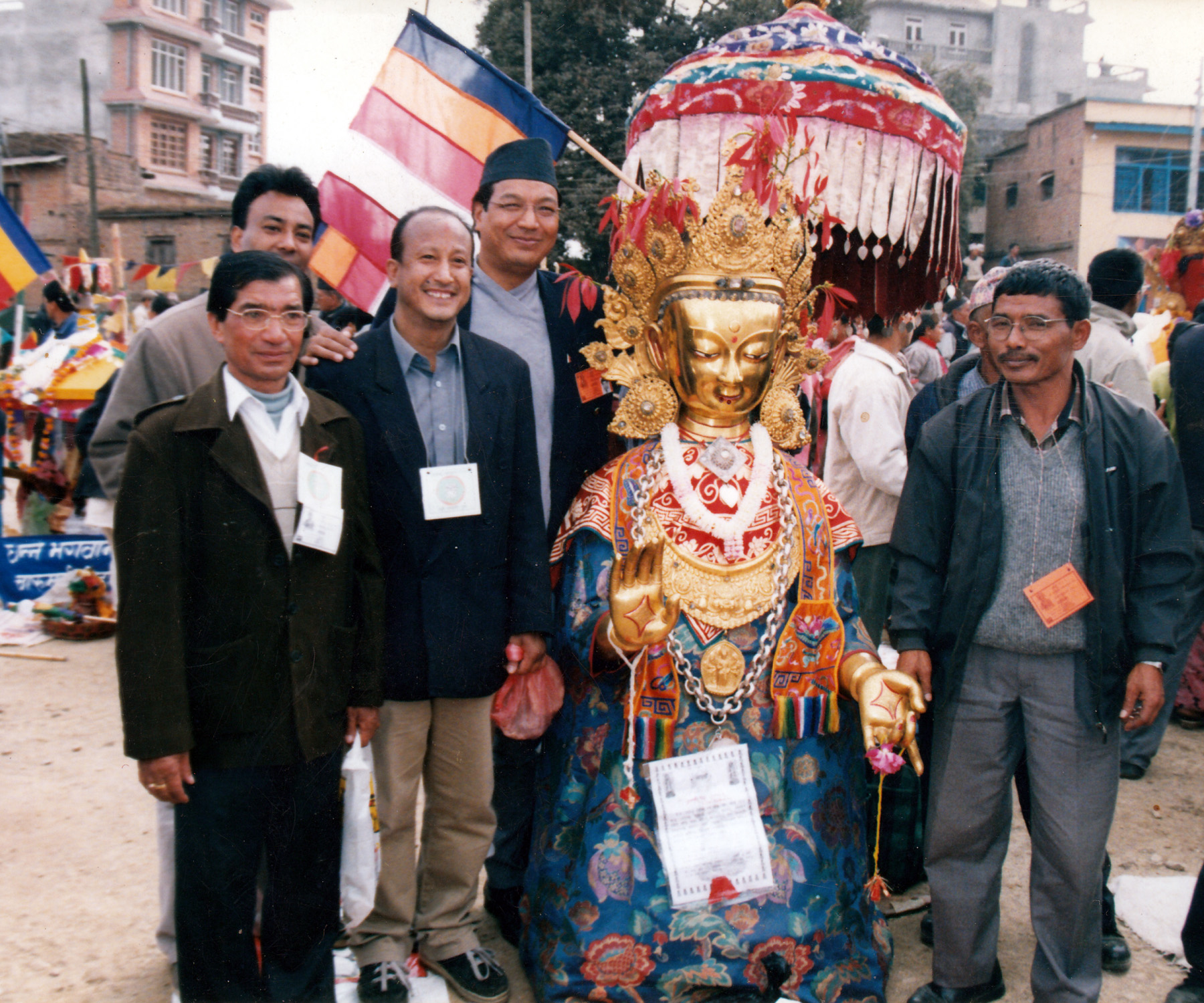Bhuikhel on:
[Wikipedia]
[Google]
[Amazon]

 Bhuikhel ( ne, भुइखेल) is a large plain located in the western part of Kathmandu at the foot of
Bhuikhel ( ne, भुइखेल) is a large plain located in the western part of Kathmandu at the foot of

 Bhuikhel ( ne, भुइखेल) is a large plain located in the western part of Kathmandu at the foot of
Bhuikhel ( ne, भुइखेल) is a large plain located in the western part of Kathmandu at the foot of Swayambhu
Swayambhu ( sa, स्वयंभू) is a Sanskrit word that means "self-manifested", "self-existing", or "that is created by its own accord".
Often, the word swayambhu is used to describe a self-manifested image of a deity, which was not made ...
hill. Also known as Bhukhel (भुखेल), it is famed for the Buddhist Samyak festival held here.
The field is one of the city's landmarks and the hallowed venue of Samyak, a spectacular celebration when hundreds of images of Dīpankara Buddha are assembled for an alms-giving ceremony. Bhuikhel's area has shrunk over the years due to construction on its edges.
Religious significance
Bhuikhel is of sacred significance because it is the site of the Samyak ceremony of Kathmandu. This alms-giving festival is held in all the three cities of theKathmandu Valley
The Kathmandu Valley ( ne, काठमाडौं उपत्यका; also known as the Nepal Valley or Nepa Valley ( ne, नेपाः उपत्यका, Nepal Bhasa: 𑐣𑐾𑐥𑐵𑑅 𑐐𑐵𑑅, नेपाः गाः)), ...
at differing intervals. In Bhaktapur, Samyak is celebrated annually, in Patan Patan may refer to several places in Afghanistan, India and Nepal:
Afghanistan
*Patan, Afghanistan
India
* Patan district, in the state of Gujarat
* Patan, Gujarat, the main city of the eponymous district
* Patan was the ancient capital of Gujara ...
it occurs every five years, and in Kathmandu it takes place once every 12 years. The most recent one was held in 2005. Samyak celebrates the practice of giving to the Buddhas and monks in the Newar Buddhist tradition.
The festival in Kathmandu is observed for three days. On the first day, large images of Dipankar Buddha are brought out of sacred courtyards and private homes and displayed in a row at Kathmandu Durbar Square to receive offerings from devotees. On the second day, the statues are carried in procession to Bhuikhel and assembled on the field. During the main ceremony attended by the head of state, priests receive alms consisting of different kinds of sacred foods.
The third day is known as Misā Samyak, which means Women's Samyak. On this day, the image of Goddess Ajimā Dyah is brought down from her shrine at Swayambhu for the ceremony.
Historical references
This was the place where British traveller Colonel William Kirkpatrick set up his camp when he visited Kathmandu in 1793 as the envoy of Charles Cornwallis, the governor-general of British India. Kirkpatrick has written in his account of the visit, "Our camp, during the single week we resided in Nepaul, was pitched on a rising but broken spot of ground, close to the east foot of Sumbhoo-nath, and not quite a mile distance from Khatmanda."References
{{coord missing, Nepal Kathmandu Meadows in Nepal Plains of Nepal